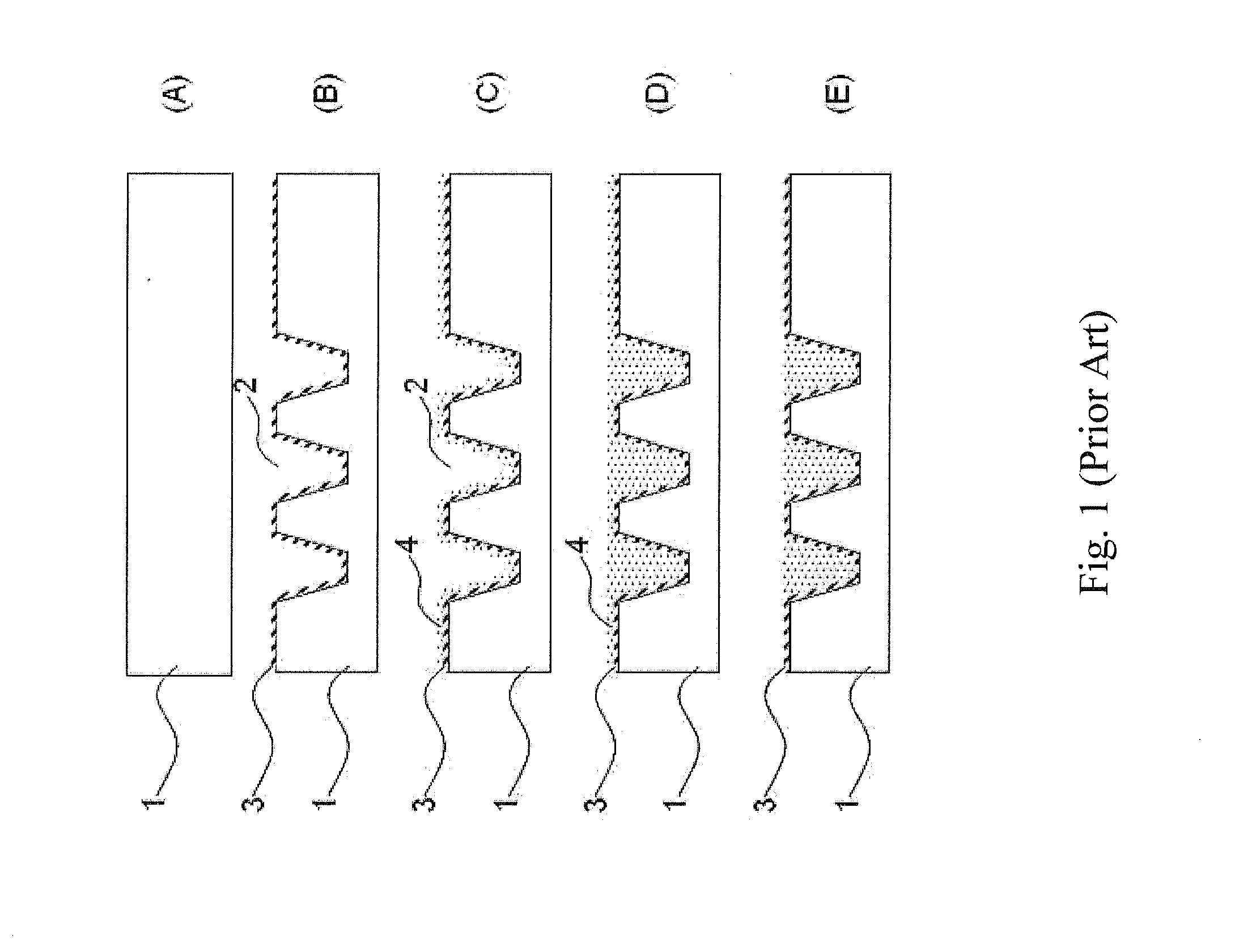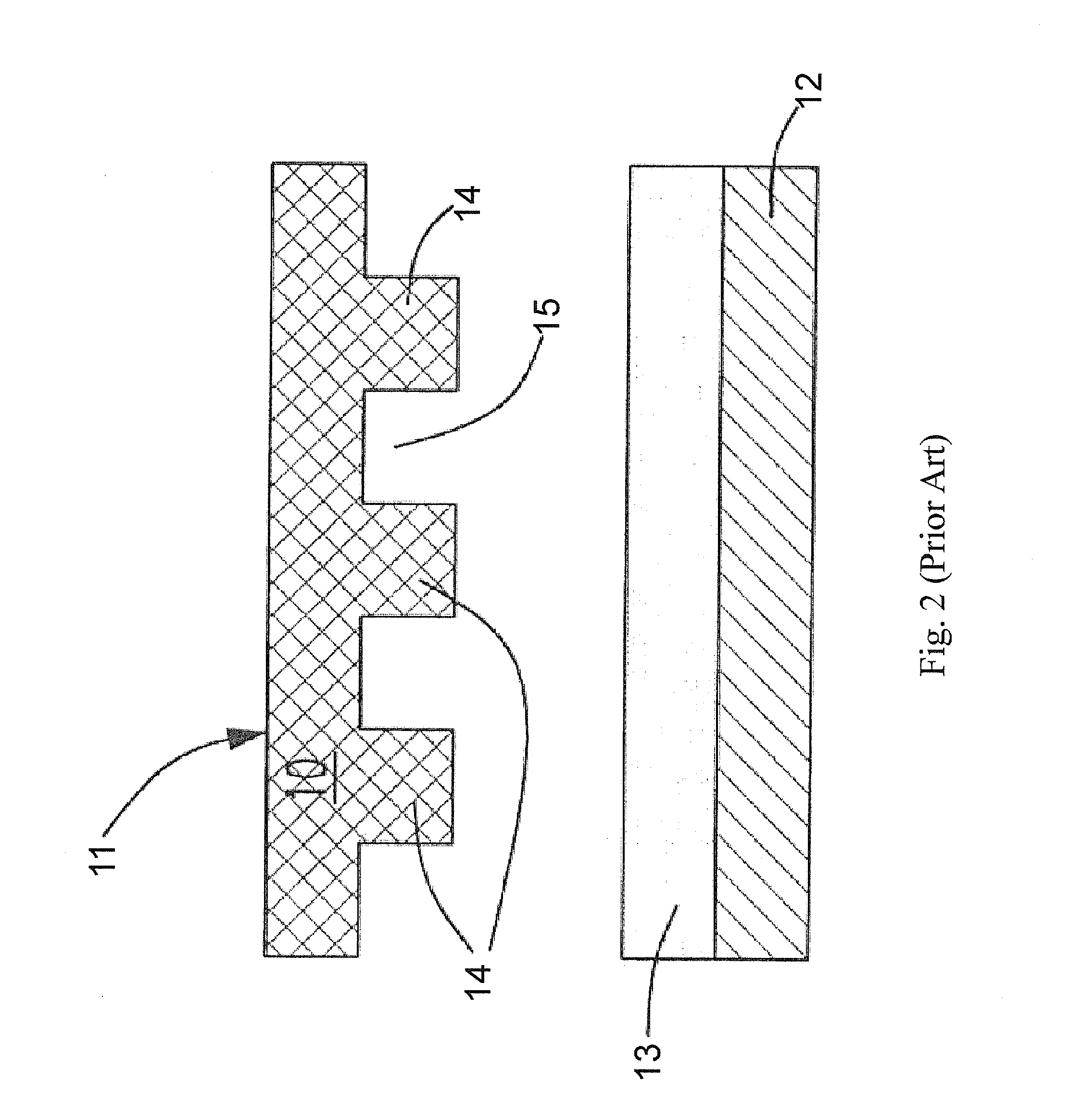Planar coil and method of making the same
a planar coil and coil technology, applied in the direction of magnets, cores/yokes, magnets, etc., can solve the problems of trapezoidal cross section of the coil and poor electrical properties of the coil, and achieve the effect of avoiding the formation of gaps in the trench
- Summary
- Abstract
- Description
- Claims
- Application Information
AI Technical Summary
Benefits of technology
Problems solved by technology
Method used
Image
Examples
Embodiment Construction
[0043]Please refer to FIGS. 4 to 11. An embodiment is described. FIG. 4 is a top view of a planar coil 110. It has a coil body 105 formed on a substrate 100. In this embodiment, the substrate 100 is a silicon substrate. In order to make illustration of the present invention more comprehensive, a cross section is taken along line AA′ to depict the steps of the invention.
[0044]Please refer to FIG. 5. In the beginning of making the planar coil 110, a patterned photoresist layer 101 is applied on the substrate 100 covering a predetermined area. Later, a number of trenches 102 are formed by etching the substrate at a place outside of the predetermined area, as shown in FIG. 6. In the present invention, deep reactive-ion etching (DRIE) is used for etching. DRIE is a highly anisotropic etching process used to create deep, steep-sided holes and trenches in wafers, with aspect ratios of 20:1 or more. It was developed for micro electromechanical systems (MEMS) which require these features. Th...
PUM
| Property | Measurement | Unit |
|---|---|---|
| aspect ratio | aaaaa | aaaaa |
| aspect ratio | aaaaa | aaaaa |
| mechanical | aaaaa | aaaaa |
Abstract
Description
Claims
Application Information
 Login to view more
Login to view more - R&D Engineer
- R&D Manager
- IP Professional
- Industry Leading Data Capabilities
- Powerful AI technology
- Patent DNA Extraction
Browse by: Latest US Patents, China's latest patents, Technical Efficacy Thesaurus, Application Domain, Technology Topic.
© 2024 PatSnap. All rights reserved.Legal|Privacy policy|Modern Slavery Act Transparency Statement|Sitemap



